Ismael Balafrej
Expanding memory in recurrent spiking networks
Oct 29, 2023Abstract:Recurrent spiking neural networks (RSNNs) are notoriously difficult to train because of the vanishing gradient problem that is enhanced by the binary nature of the spikes. In this paper, we review the ability of the current state-of-the-art RSNNs to solve long-term memory tasks, and show that they have strong constraints both in performance, and for their implementation on hardware analog neuromorphic processors. We present a novel spiking neural network that circumvents these limitations. Our biologically inspired neural network uses synaptic delays, branching factor regularization and a novel surrogate derivative for the spiking function. The proposed network proves to be more successful in using the recurrent connections on memory tasks.
Voltage-Dependent Synaptic Plasticity (VDSP): Unsupervised probabilistic Hebbian plasticity rule based on neurons membrane potential
Apr 14, 2022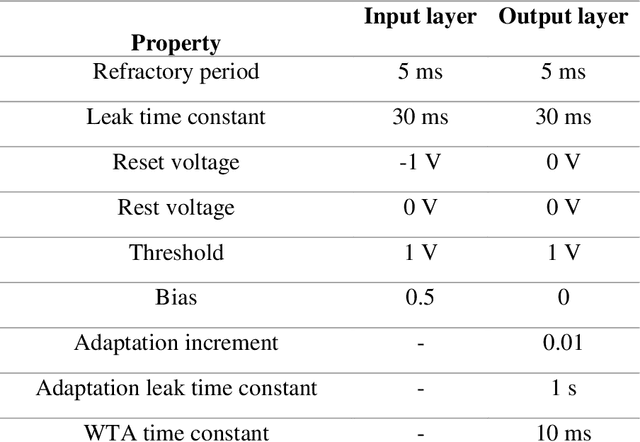
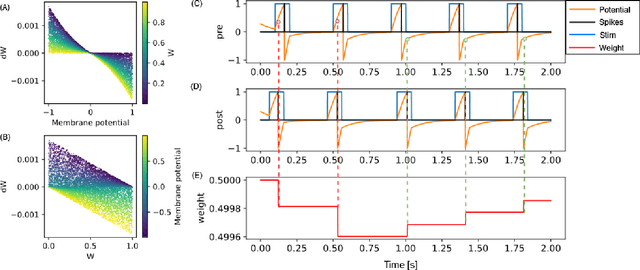
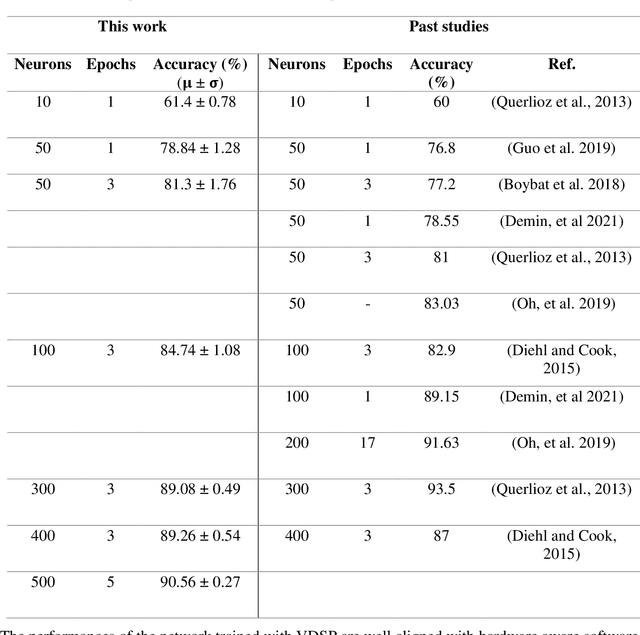
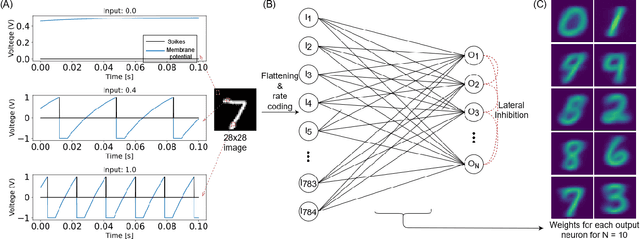
Abstract:This study proposes voltage-dependent-synaptic plasticity (VDSP), a novel brain-inspired unsupervised local learning rule for the online implementation of Hebb's plasticity mechanism on neuromorphic hardware. The proposed VDSP learning rule updates the synaptic conductance on the spike of the postsynaptic neuron only, which reduces by a factor of two the number of updates with respect to standard spike-timing-dependent plasticity (STDP). This update is dependent on the membrane potential of the presynaptic neuron, which is readily available as part of neuron implementation and hence does not require additional memory for storage. Moreover, the update is also regularized on synaptic weight and prevents explosion or vanishing of weights on repeated stimulation. Rigorous mathematical analysis is performed to draw an equivalence between VDSP and STDP. To validate the system-level performance of VDSP, we train a single-layer spiking neural network (SNN) for the recognition of handwritten digits. We report 85.01 $ \pm $ 0.76% (Mean $ \pm $ S.D.) accuracy for a network of 100 output neurons on the MNIST dataset. The performance improves when scaling the network size (89.93 $ \pm $ 0.41% for 400 output neurons, 90.56 $ \pm $ 0.27 for 500 neurons), which validates the applicability of the proposed learning rule for large-scale computer vision tasks. Interestingly, the learning rule better adapts than STDP to the frequency of input signal and does not require hand-tuning of hyperparameters.
Signals to Spikes for Neuromorphic Regulated Reservoir Computing and EMG Hand Gesture Recognition
Jul 04, 2021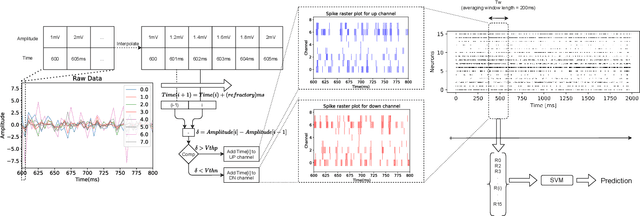
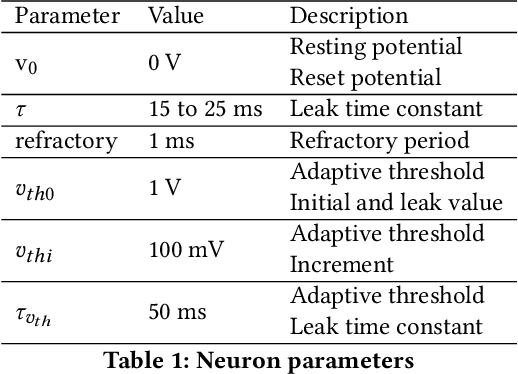

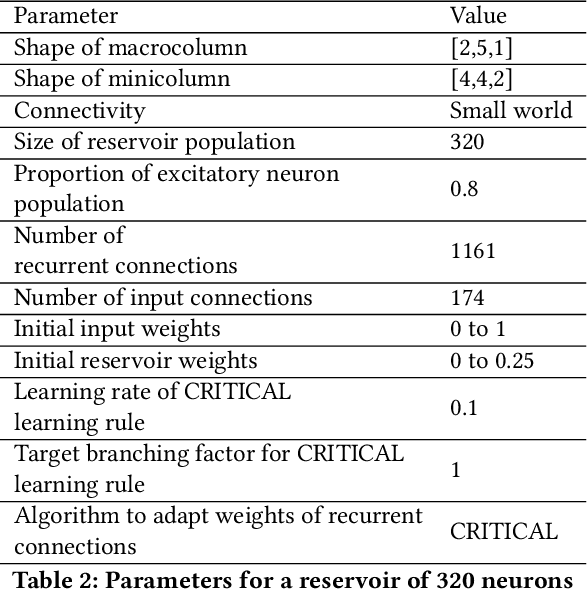
Abstract:Surface electromyogram (sEMG) signals result from muscle movement and hence they are an ideal candidate for benchmarking event-driven sensing and computing. We propose a simple yet novel approach for optimizing the spike encoding algorithm's hyper-parameters inspired by the readout layer concept in reservoir computing. Using a simple machine learning algorithm after spike encoding, we report performance higher than the state-of-the-art spiking neural networks on two open-source datasets for hand gesture recognition. The spike encoded data is processed through a spiking reservoir with a biologically inspired topology and neuron model. When trained with the unsupervised activity regulation CRITICAL algorithm to operate at the edge of chaos, the reservoir yields better performance than state-of-the-art convolutional neural networks. The reservoir performance with regulated activity was found to be 89.72% for the Roshambo EMG dataset and 70.6% for the EMG subset of sensor fusion dataset. Therefore, the biologically-inspired computing paradigm, which is known for being power efficient, also proves to have a great potential when compared with conventional AI algorithms.
P-CRITICAL: A Reservoir Autoregulation Plasticity Rule for Neuromorphic Hardware
Sep 11, 2020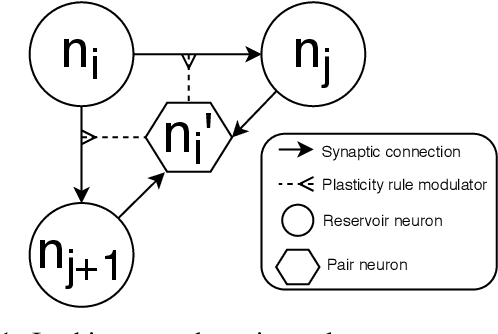
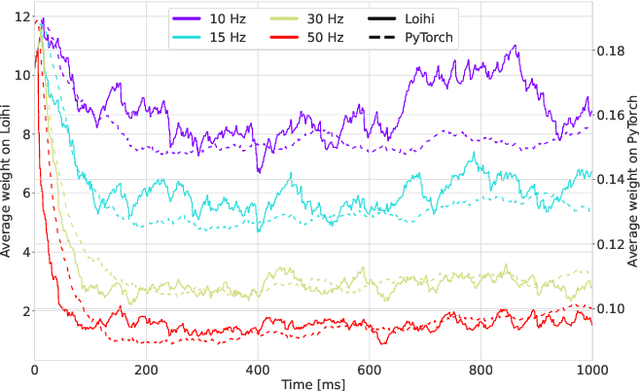
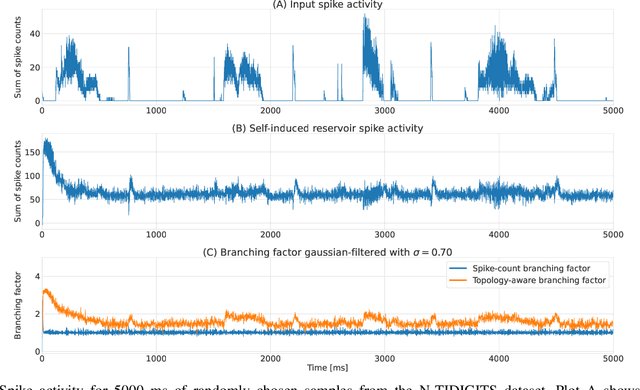
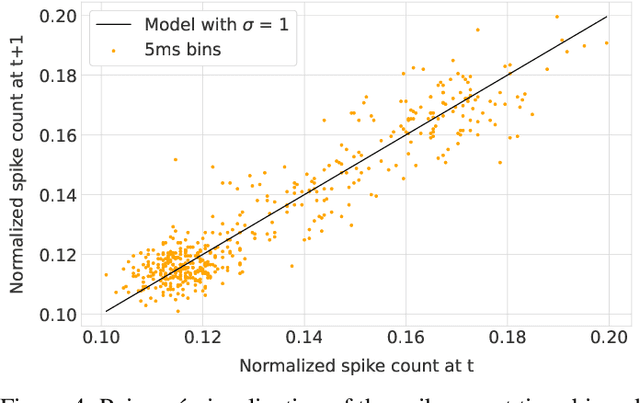
Abstract:Backpropagation algorithms on recurrent artificial neural networks require an unfolding of accumulated states over time. These states must be kept in memory for an undefined period of time which is task-dependent. This paper uses the reservoir computing paradigm where an untrained recurrent neural network layer is used as a preprocessor stage to learn temporal and limited data. These so-called reservoirs require either extensive fine-tuning or neuroplasticity with unsupervised learning rules. We propose a new local plasticity rule named P-CRITICAL designed for automatic reservoir tuning that translates well to Intel's Loihi research chip, a recent neuromorphic processor. We compare our approach on well-known datasets from the machine learning community while using a spiking neuronal architecture. We observe an improved performance on tasks coming from various modalities without the need to tune parameters. Such algorithms could be a key to end-to-end energy-efficient neuromorphic-based machine learning on edge devices.
 Add to Chrome
Add to Chrome Add to Firefox
Add to Firefox Add to Edge
Add to Edge